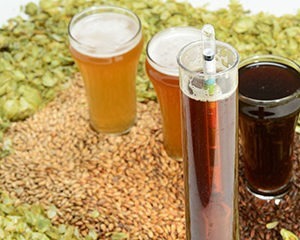Transfer/Racking Beer
Transferring or racking beer from one container to another after fermentation is complete can be a fairly simple task for some; but for the more obsessed brewer, is one of the most pivotal points in the entire brewing process. One of the key aspects found in the task is learning what not to do and some helpful strategies that might make it run smoother. Rule #1 when it comes to transferring your beer post-fermentation: Try to introduce as little oxygen into the beer as possible. Easier said than done. So let’s get into it.
Why Does Oxygen Matter?
Oxidation is a process that will detrimentally affect your post-fermentation beer in almost all cases. It happens when even minute amounts of oxygen are allowed to dissolve into the beer and start reacting with fresh aromatics we want. Oxygen pick-up is something brewers the world over try to avoid in their transferring and packaging processes.
What most notably degrades from these oxidative processes? First are the fresh hop and malt characters. Styles more prone to oxidative decline are big, fresh IPAs and more delicate malt styles like a Munich helles. If enough oxygen is allowed ingression into these styles of beer, oxidative degradation can start fairly rapidly. Things to note are that colder temperatures do slow oxidation, but conversely, more oxygen can dissolve into your beer when cold.
Spotting Oxidation
In most instances, unless the beer was truly handled poorly, then it should take some time to note a major loss of flavor or oxidative notes in the beer. But how do they appear? Let’s say you thoroughly enjoyed a beer at a brewery, then one day you purchase a can of it at your local store. When you smell and taste it, the first thought is, “this isn’t the same beer . . . this isn’t good.” That’s it . . . the hop aroma is either lackluster or even off. That bready, biscuity malt character you so loved at the taproom now just lingers on your tongue in a way that makes you shake your head. You look at the packaging date and realize it’s several months old . . . caveat emptor.
Ways to Transfer
Having a spigot attached near the bottom of your fermentation vessel is probably the easiest way to transfer, but may require a little work to install and extra maintenance in the form of cleaning and sanitizing. To transfer, attach a clean and sanitized tube (silicone if you can) to the spigot, position the fermenter above, make sure the tube reaches all the way to the bottom of the receiving vessel below, and open it up.
A simple siphon is the most cost-effective method — just an adequate length of clean and sanitized tubing is required. Position the receiving vessel below the beer, fill the tube with water, cover both ends with your thumbs, place one end in the beer then let go, then place the other end at the bottom of the receiving vessel and let it rip.
Auto-siphons allow for the same process without needing to fill the tube with liquid or dipping your hands in the beer. Negative pressure from a clapper valve on the auto-siphon primes it by pulling the beer up into a vertical chamber, eventually filling the chamber and then the tubing with beer, allowing the siphon to proceed.
CO2-assisted transfers will require specialized equipment in the form of a CO2 tank and regulator. Many fermentation vessels today allow for positive pressure from the tank to push the beer out of the fermenter and into the receiving vessel. This means you don’t necessarily need gravity assistance for transferring. But brewers can just use CO2 to get the siphon primed and use gravity for the remaining force needed.
Minimizing Oxidation
Silicone tubing: I recommend it over vinyl for transfers. Why? Because vinyl has memory . . . in other words, it curls. Placing the tube at the bottom of the receiving vessel may resemble a geyser with vinyl tubing. Silicone tubes sit flat on the bottom and will create a more laminar flow as it runs into the vessel, meaning less splashing.
Boiling priming water: This may only be thought about for those more delicate beers, but if you are using water to prime a siphon, a quick boil to de-aerate the water helps (cool before using). If using 6 ft. (1.8 m) of 3⁄8-in. ID tubing, there are 4.4 oz. (130 mL) of water that contains ~16 ppm (parts per million) O2 if the water is left cold. Brewers talk in ppb (parts per billion) when they talk about oxygen pick-up for transfers or packaging so adding water with hundreds time more dissolved oxygen than you want can have an impact. Sure it’s minimal, but it’s not nothing.
Purging lines with CO2: Pushing some CO2 through the airspace in the tubing prior to transfer can greatly reduce mixing of oxygen in the tube as beer begins to flow through it.
Purging vessels: Unlike oxygen, CO2 is fairly inert in beer so prior to transferring beer into a new container, a purge will often be performed by brewers with the proper equipment to do so. This requires a CO2 system and can be as simple as placing tubing near the bottom and opening up the valve a crack to try to push some oxygen out of the lower region of the vessel (note that CO2 is slightly more dense than air so will linger longer on the bottom). A more thorough way to purge a vessel is to fill the receiving vessel with water or sanitizing solution and push that out with the gas leaving the vessel filled with CO2. Purges can also be done once the vessel is filled with beer to minimize oxygen in the remaining headspace.


